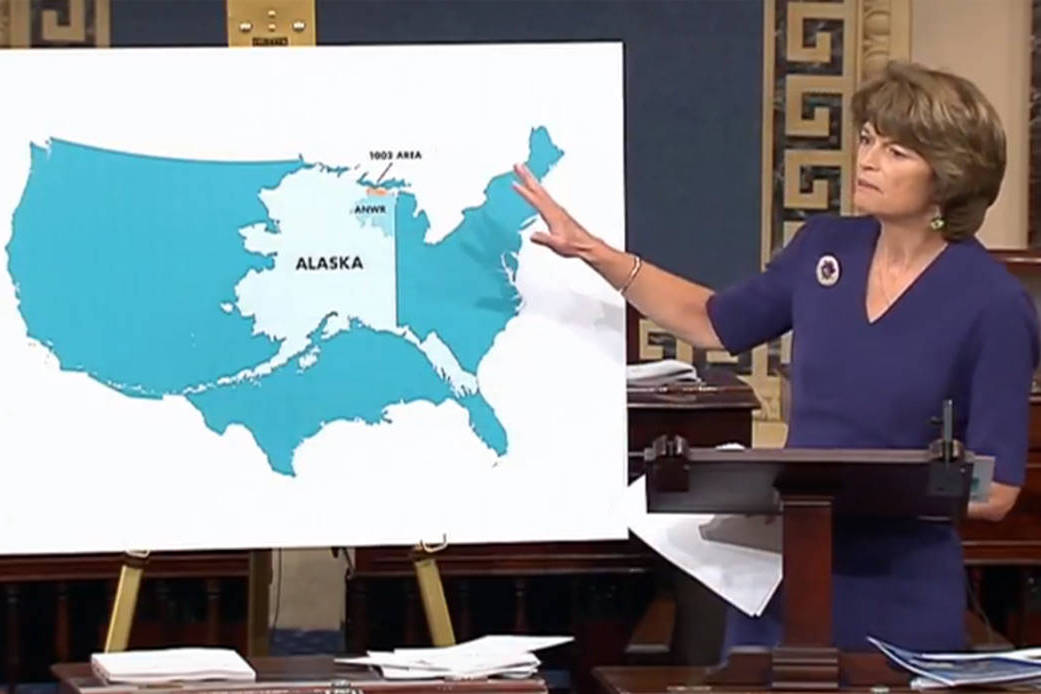In just a few months, energy companies may begin exploring for oil in Alaska’s Arctic National Wildlife Refuge. Environmentalists warn this will destroy the remote area’s pristine beauty and endanger local wildlife.
Thankfully, their fears are unfounded. Opening ANWR to energy development will enrich nearby communities and the nation as a whole — without noticeably disrupting the local environment.
ANWR, usually pronounced “Anwar,” is a 19.6-million-acre wilderness area in northeastern Alaska — about the size of South Carolina. The federal government established ANWR in 1980 and decreed it off limits to energy exploration, except for a 1.5-million-acre section known as Area 1002. Congress deferred a decision on whether to permit drilling in Area 1002. Lawmakers came close to greenlighting energy exploration in this section several times in recent decades. But they ultimately backed down due to pressure from environmental activists.
The prohibition on drilling locked up a total of 10.4 billion barrels of oil, according to estimates from the U.S. Geological Survey and Congressional Research Service. That’s more than the reserves of major oil producing countries such as Mexico, Angola and Norway.
In last year’s tax reform law, Congress opened up Area 1002 for oil and natural gas leasing. The decision could ultimately boost oil production by 1.45 million barrels a day — more than the United States currently imports daily from Saudi Arabia. The Department of Interior recently confirmed plans to lease 2,000 surface acres of Area 1002 to energy companies beginning in 2019.
Tapping into Area 1002’s rich resources would boost Alaska’s economy, which currently suffers from a 7.1 percent unemployment rate — the highest in the nation. Alaskans are eager to responsibly reap ANWR’s bounty. In a 2016 survey, more than 90 percent of registered Alaskan voters agreed that increasing domestic production of oil and natural gas would create jobs and stimulate the economy.
Nationwide, opening Area 1002 for energy production would create up to 130,000 jobs. All told, ANWR energy production will bring in $1.1 billion in federal revenue over the next 10 years and as much as $296 billion in the coming decades.
Environmentalists staunchly oppose opening Area 1002 to drilling — they argue that any potential oil spills could harm local wildlife.
But spills are unlikely. In fact, environmentalists started a website in 2015 to track spills — but their page has not documented a single spill in Alaska since then.
Environmentalists also worry that, even if there are no accidents, the drilling will disrupt the migration patterns of local wildlife. After all, ANWR is a caribou calving ground.
These activists need not worry. The tax law specifies that whichever companies win the leases can only build rigs and roads on 2,000 acres — just 0.1 percent of Area 1002’s total landmass.
Plus, there’s no evidence that oil drilling disturbs caribou. During the early years of oil production in Alaska’s Prudhoe Bay in the 1970s and 1980s, the Central Arctic Herd caribou population actually grew from 5,000 to 14,000 — proving that environmental stewardship and oil development can go hand in hand.
U.S. Sen. Dan Sullivan, R-Alaska, put it well, stating that “no one in the world produces energy more responsibly than Americans, especially Alaskans.”
With these recent steps to open Area 1002 for development, lawmakers have put the country on the path to prosperity and energy independence.
• Bethany Marcum is executive director of the Alaska Policy Forum.
• Bethany Marcum is executive director of the Alaska Policy Forum. My Turns and Letters to the Editor represent the view of the author, not the view of the Juneau Empire.

